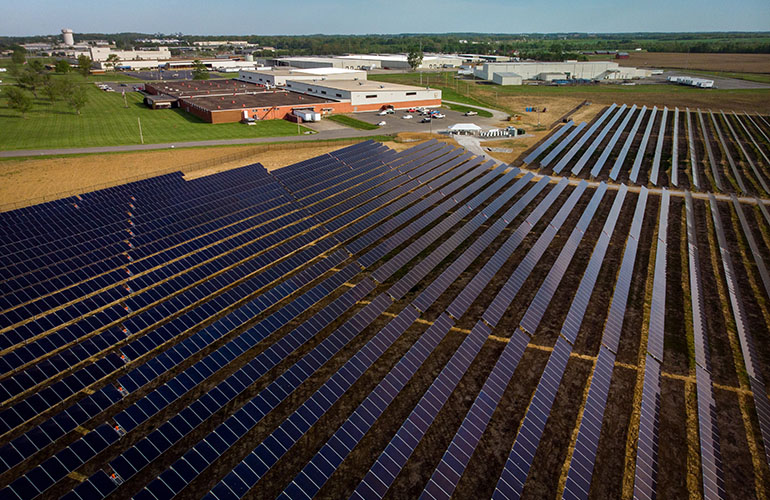California surpassed RPS goals in 2020 with 34.5% renewables

Credit: Solar FlexRack
Data from the California Energy Commission (CEC) shows 59% of the state’s electricity came from renewable and zero-carbon sources in 2020.
The CEC estimates that in 2020, 34.5% of the state’s retail electricity sales were served by Renewables Portfolio Standard (RPS)-eligible sources such as solar and wind. That’s 1.5% more than the state’s 2020 goal of 33%. When sources of zero-carbon energy such as large hydroelectric generation and nuclear are included, 59% of the state’s retail electricity sales came from non-fossil fuel sources in 2020.
In 2019, over 60% of the state’s electricity came from renewable and zero-carbon sources. The decrease is 2020 is due to decline in hydroelectric generation caused by severe drought, as well as pandemic-related delays to new renewable energy projects.

“California is fully committed to achieving 100% clean electricity,” said CEC chair David Hochschild, “The cost reduction and innovation happening in the renewable energy industry have created the conditions where renewables are mainstream and fossil fuels are now becoming the alternative energy.”
Annual numbers also indicate that California surpassed the 2020 RPS goals in 2018, when an estimated 34% of retail electric sales came from RPS-eligible sources.
Senate Bill 100 (2018) accelerates the RPS goal to 60% by 2030. The landmark policy also requires RPS-eligible sources and zero-carbon resources to supply 100% of California’s electricity retail sales and electricity procured to serve state agencies by 2045.
Governor Gavin Newsom’s 2022-23 budget proposal includes nearly $2 billion to spur additional innovation and deployment of clean energy technologies to support the state’s transition to 100% clean electricity. This includes funding for long-duration storage and planning for offshore wind, two critical resources that can help cover the gap that occurs at the end of the day when renewable generation such as solar drops and demand for power rises.
 The data shows the 2020 decrease is primarily due to a nearly 20% decline in large hydroelectric generation compared to 2019. The small decrease in the amount of RPS-eligible renewables is mostly due to decreased production from small hydroelectric facilities, which dropped by just over 40% compared to 2019. Additionally, pandemic-related delays to new clean energy projects contributed to a 50% drop in new in-state RPS generation.
The data shows the 2020 decrease is primarily due to a nearly 20% decline in large hydroelectric generation compared to 2019. The small decrease in the amount of RPS-eligible renewables is mostly due to decreased production from small hydroelectric facilities, which dropped by just over 40% compared to 2019. Additionally, pandemic-related delays to new clean energy projects contributed to a 50% drop in new in-state RPS generation.
For more information on the state’s progress toward 100% clean electricity for all, download the 2021 Annual California Clean Energy Almanac on the CEC’s Energy Almanac page.
News item from the CEC
<!–
–>
Original Source: https://www.solarpowerworldonline.com/2022/02/california-suroassed-rps-goals-2020-renewables/














